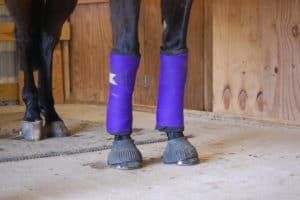
Understanding Equine Muscle Atrophy
Discover the causes, treatment, and prevention of this common muscular problem in horses.

Discover the causes, treatment, and prevention of this common muscular problem in horses.

Learn why this antioxidant is important for muscle health and how to supplement it safely.

A comprehensive look at options for keeping equine athletes with arthritis on the move. Sponsored by Bimeda.

Learn how veterinarians get to the bottom of this complex cause of poor performance.

Two veterinarians share how they diagnose, treat, and rehab back-sore horses.

Do we underestimate the impact of ill-fitting tack on our horses? Learn how to assess saddle fit in this article from the Riding Horse 2023 issue of The Horse.

Leading researchers from around the world share their findings on this common joint disease of young horses.

Equine shivers can be a challenging disease to understand, but new study results have revealed important information about it.

Learn how smart trimming and shoeing techniques can help arthritic horses.

Should you consider purchasing a horse with arthritis? An equine researcher explains the risk.

Early diagnosis and proper treatment of these joint problems can make the difference in whether the horse can return to soundness.

When a horse’s healing process gets derailed, wounds can become chronic. Here’s how to prevent complications.

There are right and wrong ways to bandage horses’ limbs, no matter the wrap’s purpose.

Find out how proper nutrition, including high-quality protein, could help improve muscling over your horse’s back.

Spirulina might be a beneficial supplement for horses due to its protective effect seen in other species’ joint cartilage.

Varying the surfaces on which you exercise your horse can help produce a strong, well-rounded equine athlete. Learn more in this article from the Summer 2023 issue of The Horse.
Stay on top of the most recent Horse Health news with
© 2022 Copyright Statement dolor sit amet, consetetur sadipscing User Terms, sed diam nonumy eirmod tempor invidunt ut labore et dolore magna aliquyam erat, sed diam voluptua. At vero eos et accusam et justo duo dolores et ea rebum. Stet clita kasd gubergren, no sea takimata sanctus est Lorem ipsum dolor sit amet.
"*" indicates required fields